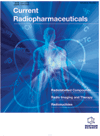
Full text loading...
We use cookies to track usage and preferences.I Understand
The reproductive organ, housing spermatogonial stem cells (SSCs), undergoes ongoing division impacted by the irradiation dosage and exposure duration. Within the male reproductive organ, germ stem cells (spermatogonia) and somatic cells (Sertoli and Leydig cells) are present. Lower doses of ionizing (>4-6 Gy) and non-ionizing radiation (radiofrequency and microwave range 900 MHz - 2.45 GHz) may cause sperm-related issues, while higher doses (15 Gy) may affect Leydig cells and testosterone production. Response to radiation varies with age and pubescence. Spermatogonial stem cells, crucial for regenerating the spermatogenic lineage, express molecular markers like Estrogen receptor, FSH (Follicular Stimulating Hormone) receptor, TLR-4 (Toll-like Receptor-4), TLR-5 (Toll-like Receptor-5), FGF2 (Fibroblast Growth Factor-2), KIT (Receptor Tyrosine Kinase), AT-1 (Angiotensin II Type-1 Receptor), LXRs-γ (Liver X Receptor-γ), TNF-β (Tumor Necrosis Factor-β), and PCNA (Proliferating Cell Nuclear Antigen), influencing stem cell activity in testes.
This study aimed to review the various available radioprotective agents and their efficacy in targeting the male reproductive system from the available literature.
Various radioprotective herbal/synthetic/microbial/metallic extracts/formulations/ drugs [Septilin, Silymarin, Organic Turmeric, Oestrogen, Melatonin, Febuxostat, SQGD (Semiquinone glucoside derivative), Rapamycin, Entolimod, Zinc, Selenium, etc.] have been investigated up to exposure, but owing to effectiveness issues, they are unable to fulfil the aim to the fullest of restoring male fertility and normal testosterone levels during such eventuality.
Further study is needed to optimize these tactics and fill knowledge gaps. Also, the effective components of herbal, synthetic drugs, etc., should be isolated and tested up to clinical levels, paving the way for successful radioprotection and radiomitigation strategies in the male reproductive system.

Article metrics loading...

Full text loading...
References


Data & Media loading...

